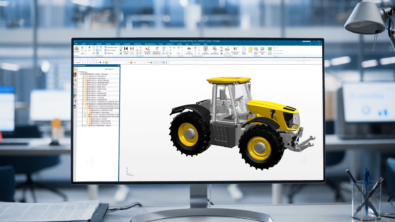Best PLM software strategies for smart, connected product development

Smart, connected products are more complex than ever and the timelines to develop those products continue to shrink, necessitating a product lifecycle management (PLM) solution.
The best PLM software strategies embrace six different aspects to transform the added complexity into business advantages.
1. Connectivity
The digital thread connects all the information and processes related to product definition and development.
The best PLM software connects everything from mechanical and electrical designs to bills of material and other documents.
Storing all this information in a single platform in an organized manner minimizes the complexity of the project while simultaneously providing an authoritative, single source of truth for every stakeholder.
2. Cross-domain collaboration
A single source of truth simplifies collaboration across engineering teams and cross-functional departments.
The best PLM software is capable of storing mechanical, electrical, electronic, software, and simulation data, and this is making it easier for engineers to reuse designs, find important documentation, and improve the quality and reliability of their products.
The most productive PLM software does all this seamlessly and quickly, enabling engineers to be more efficient and productive.
3. Visualization with the digital twin
Combining the virtual world and the physical world is generating new insights into product development.
This is often referred to as the digital twin, but augmented reality and virtual reality are expanding on the idea.
The best PLM software employs the digital twin to visualize products throughout their development lifecycle and realize innovations more quickly with fewer prototypes.
4. Change management
Taking control of change management is essential for efficient product improvements.
As organizations optimize products multiple times and consumers only need to understand as few variations as possible, the best PLM software makes change management seamless.
Smart technologies are constantly changing, so connected products experience more regular updates, necessitating a PLM solution.
5. Multi-disciplinary BOM (Bill of Materials)
Connected devices meet diverse applications, so they’re inherently more complex.
This translates to a larger, more involved BOM.
Fortunately, the best PLM software simplifies and centralizes this process, including requirements, specifications, configurations, and product variations.
6. Cloud-based access
Software as a service, or SaaS, is leveling the playing field for any organization in need of a PLM solution.
PLM was once reserved for only the largest companies, but with cloud-based access, the best PLM software solutions are more affordable and more accessible to small and medium-sized businesses, including startups.
Companies embracing cloud-base PLM can collaborate from anywhere, enabling faster innovation and faster time to market.
More strategies for smart, connected product development
For companies designing and manufacturing connected products, entering the market before your competitors can be the deciding factor for success.
Finding the best PLM software to meet your needs can help an organization thrive and succeed.
To learn more about PLM and smart product development, watch the complete on-demand webinar:


